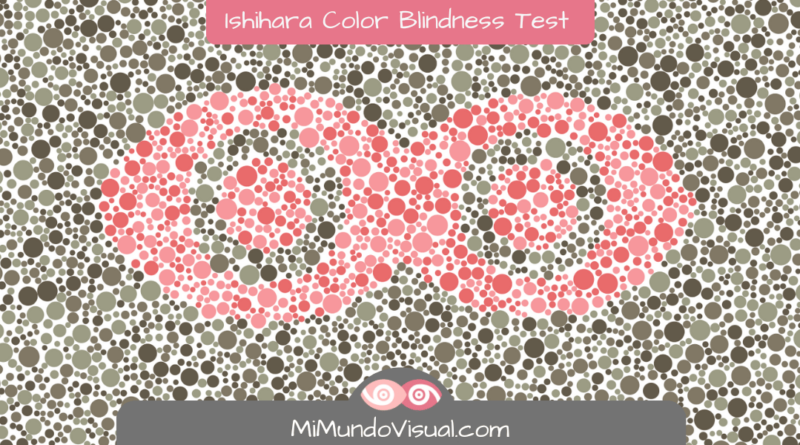Ishihara Color Blindness Test
Table Of Contents
The Ishihara test is used to detect if we have problems distinguishing colors. In this article, we will learn what the Ishihara Test is, what is a reverse color blindness test, and how is a color blindness test is done for children. We will also share two examples of color blindness tests to perform online and a video with the results.
You might be interested in…
- Color Blindness – Daltonism
- What Is A Stye And Why Do They Appear?
- 7 Questions About Myopia Answered!
- Ametropia?
- What is Computer Vision Syndrome?
- Eye Fatigue – Asthenopia – All You Need To Know!
- 4 Questions About Cataract Surgery
Download our Free Amblyopia Guide
What Is The Ishihara Test?
The Ishihara color blindness test is a test for color vision deficiency. It is the most widely used color vision test in the world, introduced by Dr. Shinobu Ishihara in 1917.
This color vision deficiency test consists of the Ishihara plates to detect color blindness to red and green colors. If you want to know more about what color blindness is and what types of color blindness exist, click here.
The Ishihara test refers to an examination of 38 plates with a circle printed on each of them, formed by dots of different colors, wavy lines, or a number in the center.
The Ishihara plates, as stated in The College of the Optometrists, are composed of 5 different groups:
Group 1: Any person can read the sheet.
Group 2: It will read differently depending on whether the person is color blind.
Group 3: Only people with normal vision can read it.
Group 4: Only people with a color deficiency can read it.
Group 5: It will read differently if the person has a protan (red) or deutan (green) deficiency.
Inverse Color Blindness Test
The Ishihara test also has some primers, where a color-blind person can see a number or shape (the Group 4 plates). In contrast, a person with normal color vision cannot see.
This fact is due to the fact that color-blind people are able to distinguish differences in brightness that others cannot detect. It is known as inverse color blindness.
Color blindness test for children
The Ishihara test is also available with circles, squares, or lines to test children or illiterate people.
Who was Shinobu Ishihara?
Shinobu Ishihara (1879-1963) was born in Tokyo in 1879 and studied at the Imperial University on a military scholarship. He undertook postgraduate studies in ophthalmology at the request of the Japanese exercise in Tokyo in 1908 and Germany in 1913.
Dr. Ishihara returned to Tokyo at the war outbreak and obtained a military doctor position. At that time, he was asked by the army to develop some tests so that he could test the color vision of the military, even though several tests to identify color deficiencies already existed at that time.
These tests were known as pseudo-isochromatic tests and were first designed by German professor Jakob Stilling in 1876 in Strasbourg. These tests were based on the effect of two or more colors that appear equivalent or ‘isochromatic’ despite being different or ‘pseudo.’
The first version of Ishihara’s test conducted in 1916 was not published. Still, it was reserved for the exclusive use of the Japanese military and used Japanese characters instead of numbers. Ishihara himself painted each plate in watercolor, and later, they were transferred to lithographic printing.
In 1917 Ishihara himself financed an edition of 600 copies printed by Handaya & Co with 16 plates and instructions in English.
Today, his book, ‘ Ishihara’s Tests for color deficiency,’ is published in three separate editions with 14, 24, and 38 plates.
Complete the Color Blindness Test
If you feel like doing a complete color blindness test to get an idea of what Ishihara’s test is all about. We have found two examples of the color blindness test online for you.
They are very easy to perform. You only need to write the number or the number of lines you see on the screen:
Complete the Ishihara test (source: color-blindness.com)
As indicated by its creator, being scanned images, the colors are not exactly the same as in the original version of the Ishihara test, in addition to the fact that the configuration of each screen is different and may cause the colors and, therefore, the result of the test may be different.
Color blindness test (extracted from https://iristech.co/)
We have found a video where the different primers appear with the expected result in each one of them.
However, to correctly evaluate our case or that of our children, it is necessary to visit a vision specialist to perform a complete examination and to be able to tell us if we suffer from any visual impairment and, if so, to what degree.
We should never take examinations we find online for certain, as these are purely informative and can give us erroneous or incomplete information.



